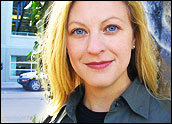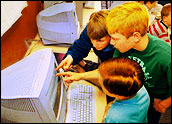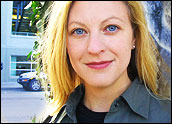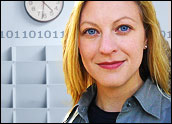
Last week, the Carter-Baker Commission on Federal Election Reform held hearings in Houston to discuss fixing the nation’s voting system. New technologies help make most businesses more effective and efficient, so it only makes sense to upgrade America’s ballot box as well.
E-voting machines, often referred to as direct recording electronic (DRE) machines, use touch screens and other high-tech devices to make voting simpler, easier and more accessible. But while the machines have many benefits, particularly when it comes to access for the blind and disabled, they are dogged by both realistic and unrealistic fears.
No Need for Paper
American Enterprise Institute resident scholar Norman Ornstein asked the Carter Commission to consider e-voting security and whether a paper trail of votes should be required. He’s not alone in this idea, but paper trails are perhaps less useful as a back-up device than a psychological aid for those who fear going totally digital. Those who are worried should understand that there are ways to allow for non-paper verification and recounts, such as through electronic and audio verification.
Indeed, in a paper-audio comparison study conducted by the Caltech/MIT Voting Technology Project, researchers found audio verification systems far more effective at helping voters catch ballot errors than a paper printout. But back-ups are not where the fears end. Some observers worry that the software code that runs the machines will be hacked or tampered with in order to steal an election.
As it stands now, in using paper to vote, all one has to do to tamper with an election is toss a bag of ballots in the ocean. It has happened many times, and election fraud is a serious problem. E-voting machines are a good solution as average poll workers are unlikely to know how to hack into or re-code the voting machines. As for the claim that the makers of the machines themselves might try to fix the election, there’s a way to deal with that too.
Routine Inspections
Without compromising important intellectual property protections, state and national election officials should require DRE vendors to routinely allow their proprietary software code to be examined for flaws and potential weaknesses. A number of DRE vendors have already submitted their code for analysis, and should continue to do so on a regular basis. In addition, “parallel monitoring,” or randomized election day testing of e-voting machines, should be made by state election officials to maintain system reliability and bolster voter confidence. On top of these safety checks is also a market test.
With a competitive DRE vendor industry, election officials can open a bidding process to take into account voter concerns for future purchases. Election officials and activists can track the outcomes of different vendor machines over time, compare their performance, and select those that best fit their county’s needs.
These checks and balances won’t satisfy the Luddites or conspiracy theorists, but most Americans are embracing the technology. A 2004 Winston Group survey found that seven out of 10 voters were not concerned with the security of e-voting equipment, and that an overwhelming majority of voters who have used e-voting systems agreed that DRE devices are helpful in reducing electoral maladies, such as accidental over-voting or under-voting.
Fears that the machines will cause problems help to ensure proper precautions, but these fears can be overblown. Unlike paper ballots, in the history of DREs, no one has found any evidence of the machines being used for fraudulent purposes.
Most businesses and government departments have upgraded their systems using new technology, so it only makes sense to update America’s voting process as well. That will make for increased efficiency, accuracy and accessibility. In the long run, the entire country will benefit.
Sonia Arrison, a TechNewsWorld columnist, is director of Technology Studies at the California-based Pacific Research Institute and co-author of Upgrading America’s Ballot Box: The Rise of E-voting.






















































Dear Sonia,
It is incorrect that no one has ever found any evidence of voting machines being used for fraud. The evidence in Volusia County, both in 2000 and 2004, certainly points to fraud. In 2000, the central tabulator for the Diebold voting machines registered minus 16,022 votes for Gore. Memos between programmers explain, sheepishly, that this anomaly seemed to be caused by a (missing, of course) memory card — a replacement of the ballot box. This was, according to the senior programmer, "possibly unauthorised."
In the 2004 election, Volusia County was afflicted with voting machine records anomalies in 57 precincts (one-third of the county) and I personally pulled signed voting machine reports (and a homemade ballot) out of the Volusia County trash.
Now, you might say, those were optical scan machines and you are referring to DRE machines. Well now, the central tabulator in the Diebold system, that is, the program that accumulates votes from the DREs, happens to be precisely the same one that accumulates the optical scan votes.
In the DRE system using the same tabulator, the only confirmation to the above fraud (the paper ballot) is eliminated.
Now, if that isn’t concerning enough, a quick review of the Black Box Report, a security alert issued July 4, 2005, is in order: http://www.blackboxvoting.org/BBVreport.pdf
The above report demonstrates manipulation of the Diebold system such that the entire paper trail is falsified, in just minutes. The test was conducted in a real elections office using real equipment, and falsifies both the tabulator and the precinct voting machine reports, leaving only the paper ballot itself. All records except the paper were manipulated in a few keystrokes, not theory but field-tested fact. It seems reckless to advocate removing the only remaining record, the ballot.
While it is true that the ballots can be a target of fraud it is generally more visible when one tampers with paper ballots, and it would certainly take a lot longer to hand-prepare 16,022 ballots than to swap a memory card for a false tabulator readout.
Perhaps it would be a good idea to rethink your editorial. (It’s only our republic that’s at stake.)
Bev Harris – Founder –
Black Box Voting, Inc.
Ms. Arrison:
Your evaluation of the integrity of electronic voting machines and apparatus is covered with a blanket of false-security, I’m afraid.
At the invitation of Ion Sanchez, Leon County’s Registrar of Voters in Florida, computer expert Harri Hursti was able to easily manipulate the vote count, using an actual Diebold optical scan machine from the prior election, 3 different ways.
It seems that Diebold has put an executable program on the memory cards which count the votes at the polling places and are then placed into a tabulating machine. While on the surface, the program appears to be working as simply supplying the vote number totals taken at the polls, this executable, which can be programmed to trigger on a particular date or at a specific event or interger totals, can easily manipulate the vote counts in a way that matches check sums, produces a verified poll tape and leaves no evidence of its presence or handiwork.
This means that your assurances given regarding measures to ensure the integrity of vendors, such as allowing code inspections of software programs, "parallel monitoring" or randomized election day testing of machines are mute, given that the memory cards are highly transitory in nature with each one capable of customized instructions set dormant until the polls have closed.
You say no one has found any evidence of the machines being used for fraudulent purposes, but this is because the vendors have successfully kept anyone from inspecting their voting maching software, firmware, removable devices, tabulation programs and applied patches by getting court protections. But Hursti’s discovery of an executable program, which has no reason or business being on the memory card other than to facilitate vote manipulations, is evidence enough of intent. Furthermore, there were many suspect anomolies that occurred during the election, such as in North Carolina where vote counts declared 11,283 more votes than there were voters in the district. Of course, "mistakes" like these across the country were blamed on "computer error", but as a technical person, I’m sure you’ll agree, computers merely follow instructions.
The "market test" you refer to, I assume, is the certification process mandated to meet Federal standards. These testing labs are hired entities of the vendors themselves and most don’t even include a security test or even have security standards. They merely certify it will operate. Based on all of the election day malfunctions, lab testing competence is highly suspect, and clearly, this responsibility should be given to an independent testing facility that isn’t contracted by the vendor they are testing.
I was rather surprised by your defense of electronic voting machines, given that you are a technical columnist, but perhaps you haven’t been getting your information from the many internet sites that detail the inherent fallabilities of currently available voting apparatus. Or that print the opinions of noted computer experts, like Aviel Rubin, who testified over a year ago to the U.S. Federal Election Assistance Commission:
"My primary concerns with today’s DREs are:
There is no way for voters to verify that their votes were recorded correctly.
There is no way to publicly count the votes.
In the case of a controversial election, meaningful recounts are impossible.
The machines must be completely trusted. They must be trusted not to fail, not to have been programmed maliciously, and not to have been tampered with at any point prior to or during the election.
We have techniques for building secure systems, and they are not being utilized.
With respect to the Diebold Accuvote TS and TSx, we found gross design and programming errors, as outlined in our attached report. The current certification process resulted in these machines being approved for use and being used in elections.
We do not know if the machines from other vendors are as bad as the Diebold ones because they have not made their systems available for analysis."
Maybe you see the world through rose-colored glasses and can’t believe that anyone would lie, cheat or steal when billions of dollars and power is the reward because history just wasn’t your favorite subject. Personally, I would rather assume this than to resort to taking cheap shots, such as accusing you of conspiring to facilitate electronic election fraud by using your position as a technical columnist to assure the American people they have nothing to worry about by offering your repeated expert opinion that it only makes sense to trust the integrity of vendors, contracted lab testers, election officials, poll workers and electronic voting machine. I truly apologize for being the one to pop your Pollyanna bubble.
You may read the technical report of Harri Hurst here:
http://www.blackboxvoting.org/BBVreport.pdf
Sincerely,
Karla Bean